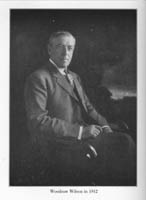Table of Contents
Media Index
CHAPTER 2
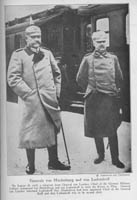
Field Marshal Paul von Hindenburg (1847-1934), right, and General Erich Ludendorff stand on the platform of a railroad station.
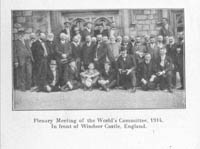
Members of the World's Committee met for the last time before the war at Windsor Castle in England in early Summer 1914. They planned an extensive global campaign, which collapsed with the outbreak of the Great War. The war would pit many of these men against each other in support of their nation's military efforts.

Christian Phildius, left, and Emmanuel Sautter, right, work at their desks in the World's Alliance headquarters in Geneva; both men served as General Secretaries of the World's Committee, although Sautter took a leave of absence during the war to serve French troops in the Foyer du Soldat program.

The members of the Executive Committee of the World's Committee met on a monthly basis in the World's Alliance headquarters in Geneva. This photograph was taken in 1913 and many of these men would soon return home to support the young men called to their national colors.

Photograph of Richard Cary Morse (1841-1926), General Secretary of the International Committee of the American YMCA from 1871 to 1915, shortly before his retirement.

Portrait of John R. Mott (1865-1955), the Secretary General of the American YMCA, which appeared in the British YMCA Monthly during a visit to Britain in 1918.
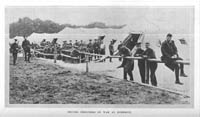
British prisoners of war relax in the compound at Doeberitz in the first few months of the war. They eat at the outdoor tables and live in the tents in the background. These men will provide the labor for the construction of the wooden facilities that will house them in the coming years.

Georg Michaelis (1857-1936) was President of the German Christian Student Movement and Chairman of the administrative council of the German National YMCA; he also served as imperial Chancellor of Germany from July to November 1917.
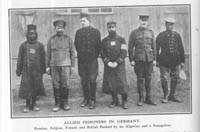
This photograph shows the variety of peoples at war with Germany; from left to right, the POW's come from Algeria, Russia, Belgium, France, Britain, and Senegal. The Germans used these kinds of photographs for propaganda purposes to mobilize the German war effort.
